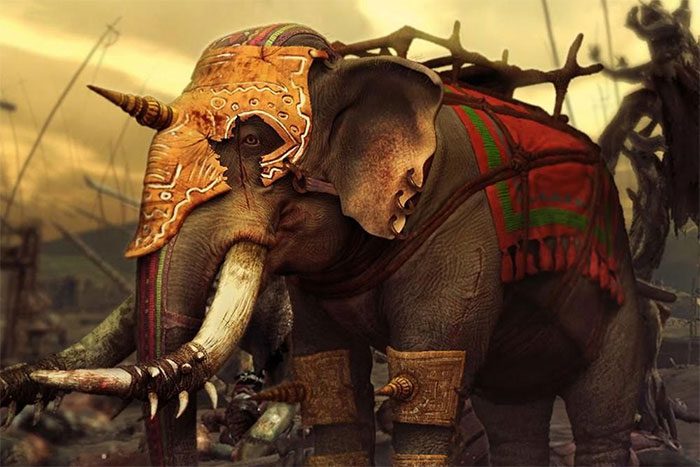Life in the mighty Roman Empire often revolved around the city of Rome and its famous seven hills. It can be said that the Roman Empire had a fairly modern social structure for its time. The majority of the population lived in the city center, confined to apartment complexes.
During this era’s cultural activities, entertainment events held in the Roman Colosseum became an indispensable spiritual feast for city residents and the upper-class aristocracy.
Slavery was an integral part of the Roman social order, with many slave markets where individuals could be bought and sold.

North African Elephant – also known as “the Carthaginian monster.”
Many Roman slaves could be freed by their masters, and some slaves managed to save money to buy their own freedom. It is estimated that over 25% of the Roman population were slaves.
At that time, slaves were considered the lowest class in society, treated unjustly and denied personal freedom. Many slaves were used for entertainment, often at the cost of their own lives.
The most famous of these activities was Venatio – the spectacle of man versus beast, a terrifying form of entertainment that often claimed the lives of its participants.
Venatio was organized in the early years of 54 BC in Rome, where players—enslaved individuals forced to perform before crowds—had to face wild animals like lions, tigers, and crocodiles.
This blood sport is estimated to have resulted in the deaths of over 9,000 animals in the Roman Colosseum. This highlights the popularity and significant scale of this royal sport during that time.
Most of the wild animals and beasts were brought from the lands conquered by the Romans. They were brought to the city, starved, and provoked before being led into the arena.
Among these forms of play was the battle between humans and colossal creatures known as “the Carthaginian monster.”
While slaves could sometimes win against other beasts, their chances were slim against this giant monster, with only a 2% chance of victory and survival.
They had to fight frantically in extreme fear against the most ferocious elephants. Due to their deep-seated hatred for General Hannibal, Romans participated in venatio to the extent that it led to the extinction of the North African Elephant.
During the reign of Augustus Caesar alone, as many as 3,500 elephants were killed due to this sport. In addition to slaves, serious criminals were also sentenced to face wild beasts.
This indicates that while Roman society had a highly organized and prosperous structure, it also had dark aspects that send shivers down our spines, as human lives were trivialized for entertainment.
This, in part, contributed to the slave uprisings against the Roman Empire, playing a role in the downfall of one of the most powerful empires of its time.


















































